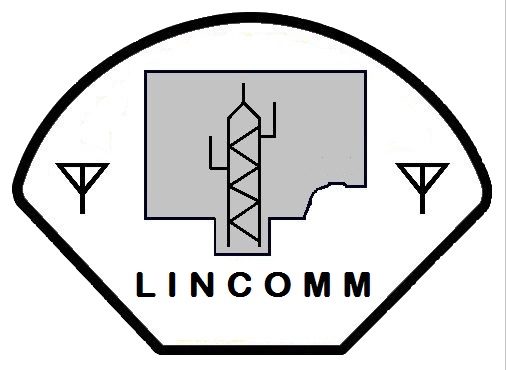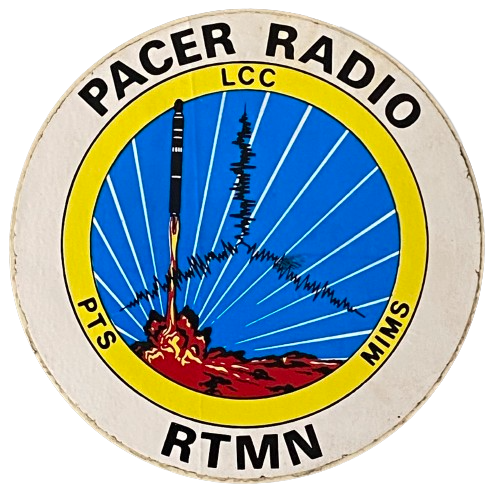 P r o j e c t P a c e r R a d i o
P r o j e c t P a c e r R a d i o
Project Pacer Radio was an upgrade of the Titan II's Radio Type Maintenance Net (RTMN). The need for an upgrade to this system, which provided communications between the Launch Control Center (LCC), the Propellant Transfer Systems (PTS) team, and maintenance personnel had been identified in 1976; however, its implementation had been slow. Due to an oxidizer spill at site 533-7, which occured on August 24th, 1978, the Project was accelerated. The failure of the RTMN to operate properly was identified to have been a major contributor to the injuries and fatalities at 533-7.
The original RTMN was a Stromberg-Carlson low band system operating on 41 and 49MHz. There were multiple monopole antennas located throughout the interior of the launch complex with an exterior antenna located on the Voice Signalling System (VSS) pole outside the entrance to the access portal. The radios associated with this system were box-like and attached to a shoulder strap. Each radio had a headset attached.
The upgraded RTMN was a Motorola VHF high band system operating on 141 and 143MHz (141.925 tx and 143.425 rx with a 5B [162.2] PL tone at site 571-7). The original Stromberg-Carlson transceivers were replaced by special-production Motorola MX-340 portable radios (likely manufactured to be intrinsically safe). On level 2 of the LCC were 12 portable radios (4 being reserved for the launch crew and 8 for PTS and maintenance personnel) stored in a rack containing two 6-bay chargers; headsets for the radios were hung on top of the charging rack.
MX340 data plate MX340 w/ carry case and strap
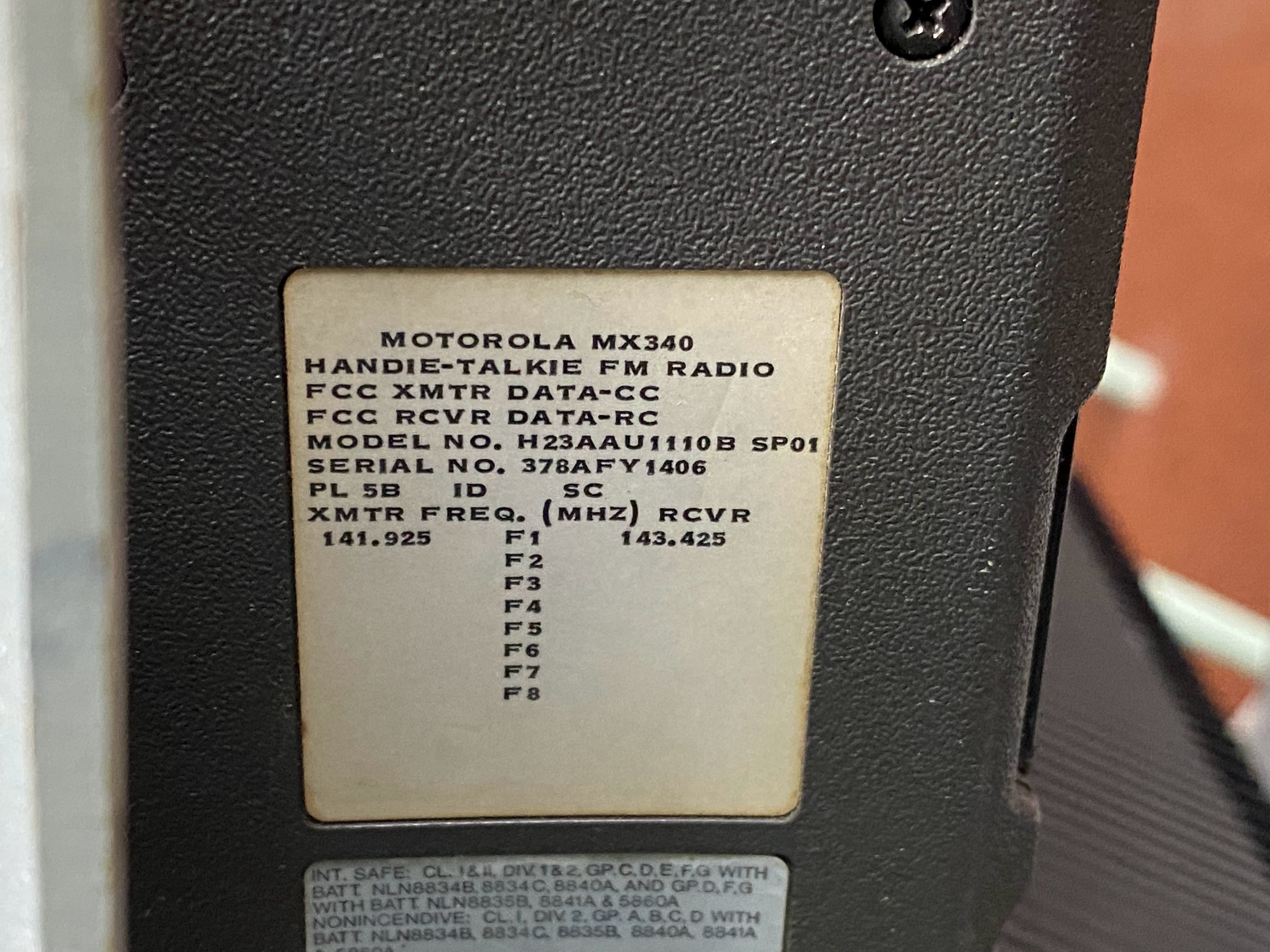
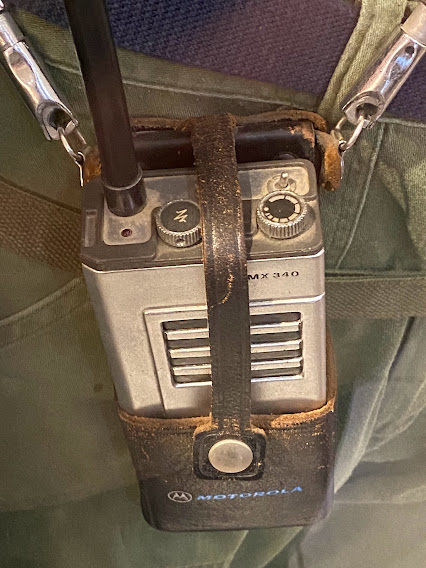
The RTMN was supported by two Motorola Micor repeaters, located on LCC level 3. One repeater was operational, and the other was standby. These units were off-the-shelf commercial repeaters.
The antenna system used by the RTMN consisted of two coaxial cable branches. The above-ground branch connected the repeater in the control center to the Andrew RX4-3R Radiax slotted cable antenna in the access portal and to an above-ground folded monopole antenna on the VSS pole at the entrance to the access portal. This branch incorporated a switch, remotely controlled from the LCCFC and ALOC, for enabling and disabling the above-ground antenna. A variable attenuator was connected to the above-ground antenna coax to limit above-ground RTMN radiation to a minimum of 2,000 feet without interfering with RTMN transmissions at other launch complexes. The below-ground antenna branch consisted of Andrew RX4-3R Radiax slotted cable which was routed from the repeater on LCC level 3 throughout the underground launch complex.
Radiax in the long cableway RTMN antenna on the VSS pole

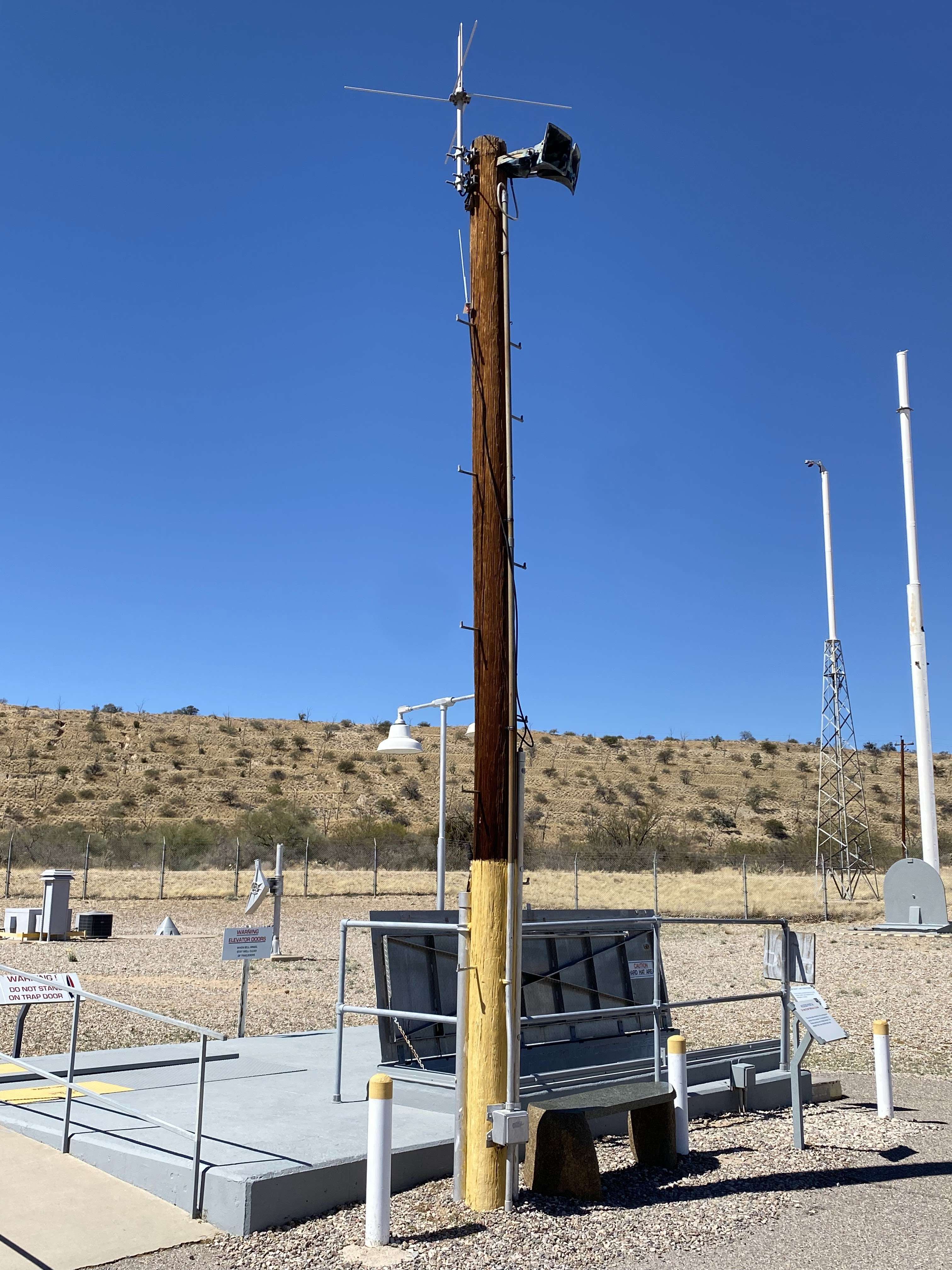
Many thanks to all those who provided the information and artifacts that made this page (and my ever-expanding interest in Titan II) possible.
